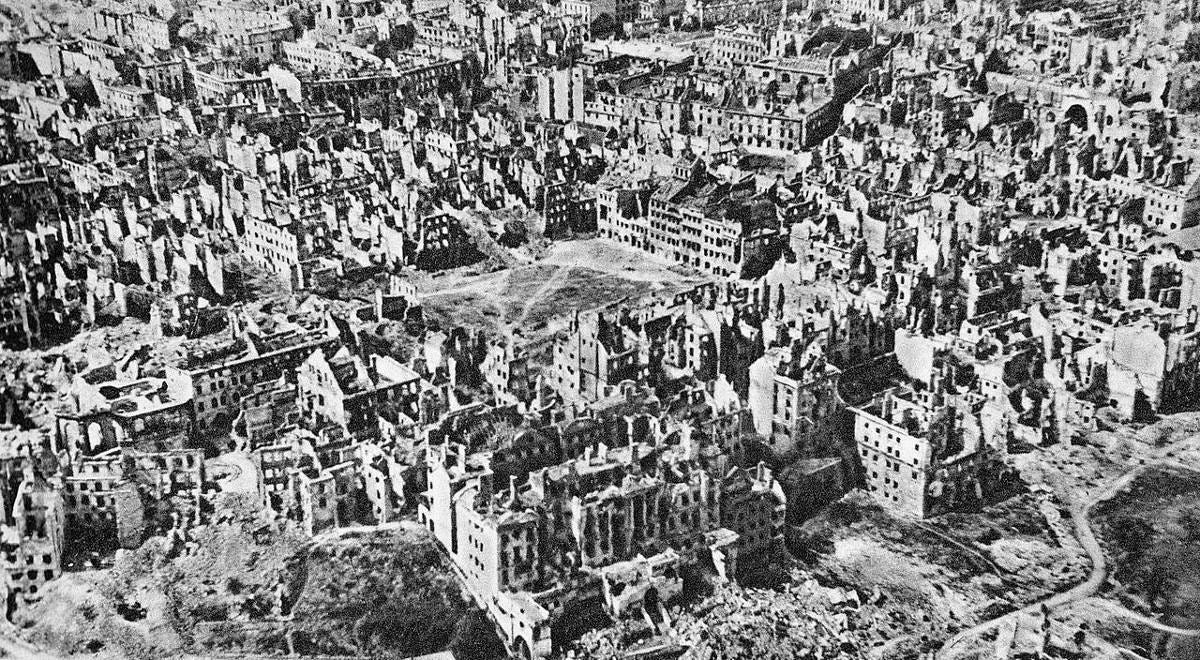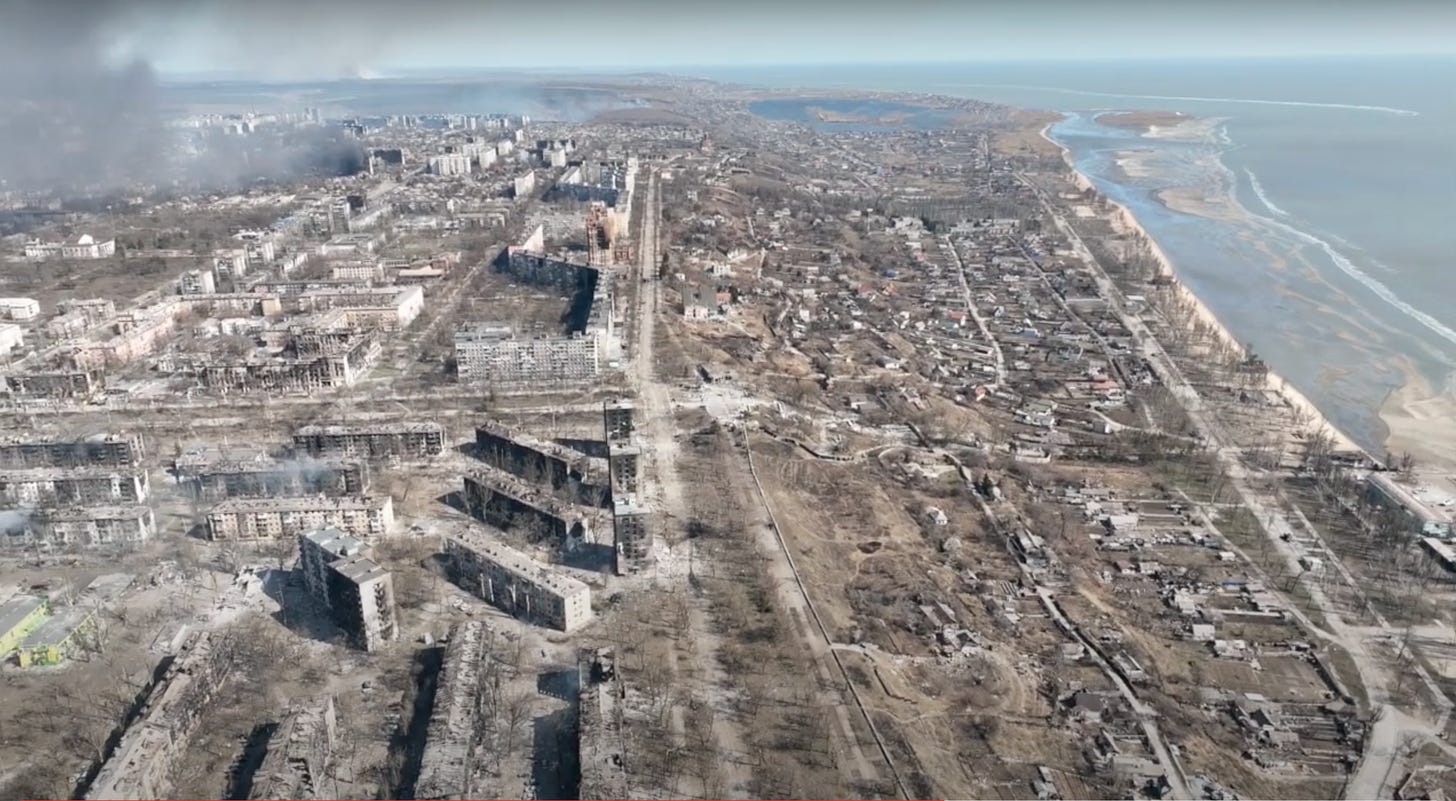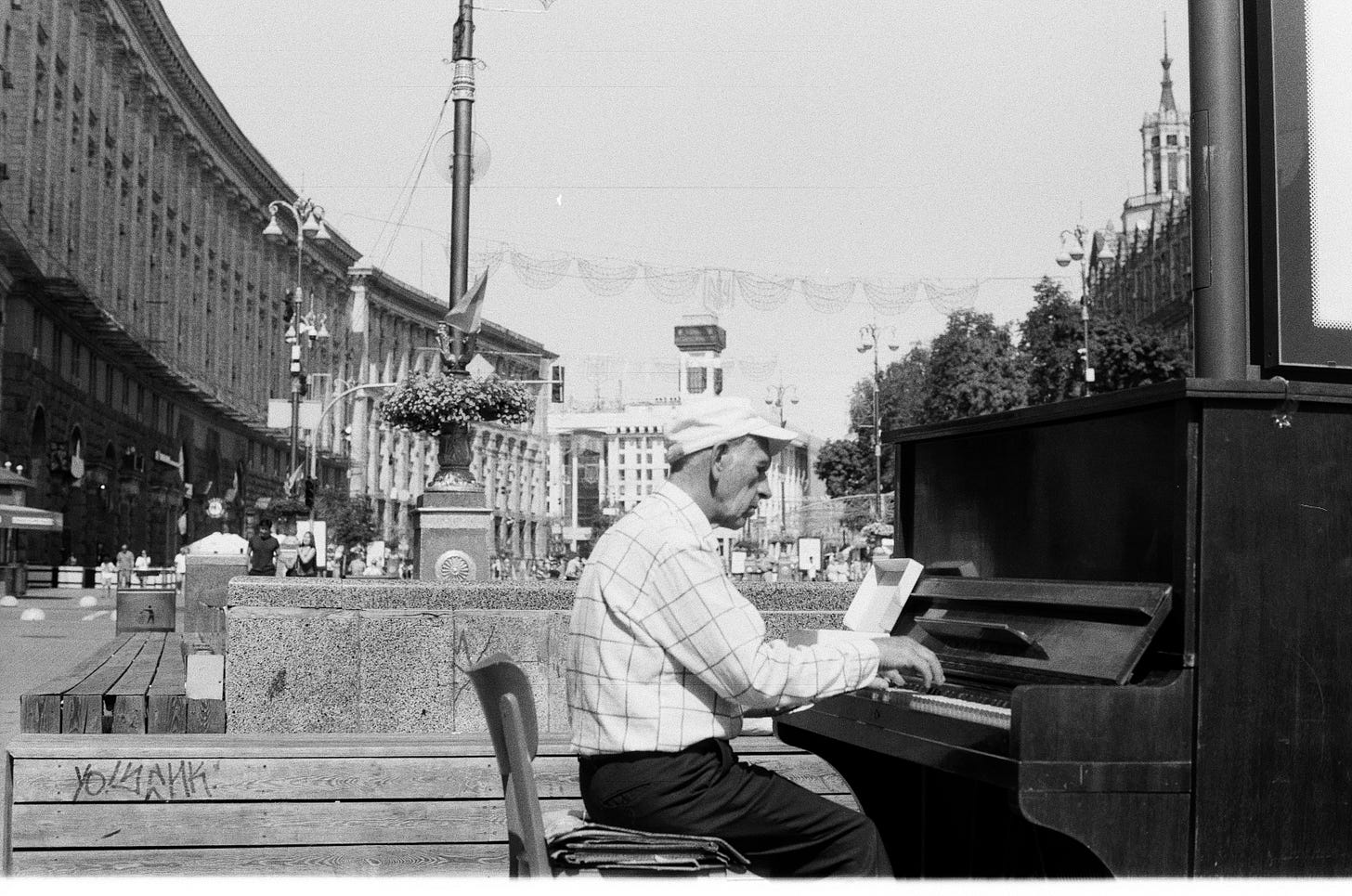The annihilation of a city
Killing a living and breathing place takes much more than just bombs and bullets. So what does it take?
On December 26, 2023, Ukraine officially declared that Maryinka, once a ten-thousand-strong town in Ukraine’s eastern steppe, “doesn’t exist anymore.”
Maryinka joined the list of Ukrainian settlements completely wiped off the Earth by Russia’s invasion. It’s a sad list.
There’s Bakhmut, a 500-year-old kozak stronghold and historic salt producer with a 2021 population of 71,000 residents. There’s also Lysychansk, once a Belgian-built industrial town of 99,000 people in 2021. There are Volnovakha, Popasna, and dozens of smaller towns and hundreds of villages that were there in 2021 but are not anymore.
The list is not final yet.
Only two months later, Ukrainians retreated from what used to be Avdiivka, a Donetsk satellite town full of dachas and apricot trees. By the time Russians crawled in, the town had become an unrecognizable pile of ruins and mud.
Now, the Russians are actively bombarding Kharkiv, home to 1.4 million people in 2021 and Ukraine’s second-largest city.
With every new Ukrainian town declared dead, I keep wondering: what does it actually mean to kill a city?
I’m not talking about bad city-governing policies that lead to economic decline and depopulation. I’m also not talking about vibrant walkable cities turning into hollow car-dependent suburbia.
I’m talking about the literal murder of a city. The ultimate annihilation of a place. A “man-made blank on the map” in a place where people once lived. How does one get to that level of destruction?
How is killing a city different from damaging or occupying it? Is “urbicide” – the act of city-killing – defined by the density of damage per square kilometer? Or is it about the intention to destroy human systems of life?
I’ve come to believe that Russia’s destruction of Ukrainian towns is not collateral damage of war. Rather, the urbicide is its central feature.
This text is my attempt to understand the mechanics of city-killing and to make sense of Russia’s systematic annihilation of Ukraine’s towns.
Cities, humanity’s greatest invention
City – and the progress it enables – is our most underrated invention.
As a species, humans have not evolved to live in cities. It took us hundreds of thousands of years to settle down and rely on crops instead of continuing the nomadic hunter-gatherer way of life.
It took us another couple of millennia to form sustainable settlements with complex economies based on divided labor and trade, shared laws, and the first writing systems. Or rather, we had to start living the urban way of life for these new ways of knowledge organization to emerge.
Since their birth, cities have been the silent enablers of human progress. Mixing up people from all paths of life, nurturing creativity and providing space for the exchange of ideas, cities were and still are humanity’s biggest asset.
Despite often being associated with dirt, noise and danger, cities are driven by hope. You must make a leap of faith to abandon your self-resilient, life-sized agrarian existence and choose a more chaotic, more interdependent way of city life. That takes both trust and hope shared between many people.
It’s not surprising that the fall of great civilizations was often followed by rapid de-urbanization. As soon as faith in the safety and prosperity of a state was gone, so was its urban population. In times of trouble, people preferred smaller life of rural self-resilience. On the contrary, the greatest powers in history also boasted the largest, most complex urban settlements.
Today, cities remain humanity’s most efficient progress machines that run on a precious fuel: a shared faith in a better future (for oneself, for our communities, for humanity in general). And because of their inherent drive for innovation and growth, cities are one of the most precious assets any nation can have.
In other words, if your intention is to destroy a society, go after its cities.
How to kill a city
Probably because of their hopeful nature, cities have proven to be surprisingly resilient throughout history.
Time and again, settlements around the world bounced back from war, pillage, and depopulation.
Around 1000 AD, Rome had fewer than 30,000 residents, less than 3% of its peak imperial glory. But Rome grew back into an even bigger megapolis of today.
Kyiv was a medieval European giant with 100,000 residents at around the same time, but it was completely wiped out by the Mongol invasion in 1242. It took Kyiv six centuries to crawl back to 100,000 residents. But the city added around 3 million people in just the next century and a half.
Urban resilience is impressive, but cities are not immortal. Many have perished eventually. Some slowly faded for centuries before turning into forgotten empty spaces. Others got crushed in an instant.
The line between temporary setbacks and the eternal death of a city is a murky one. But there is a pattern in how a city gets destroyed.
Step 1: Physical annihilation
In his fascinating book Metropolis, British historian Ben Wilson provides a chilling story of the destruction of Warsaw during the Second World War.
Many European cities were turned into ruins by the war. None of that destruction matched the annihilation of Warsaw. In 1944, the retreating Nazi Germans – after terrorizing the Varsovians for 5 years – had a final vengeful order from Himmler:
“The city must completely disappear from the surface of the earth… No stone can remain standing. Every building must be razed to its foundation.”
The Germans followed the order obediently, pulverizing almost every building in the city. Around 84% of all structures were destroyed, most of them completely razed to the ground.
When the Allies bombed Berlin, they left 50 million cubic meters of rubble. Warsaw of 1945, in comparison, drowned under 700 million cubic meters. No other city in history had experienced that amount of damage.

If physical destruction was ever the key to killing a city, Warsaw would have been the primary example. But it’s not.
As soon as the Nazis retreated, the surviving Varsovians – some hiding underground, some locked in concentration camps, others scattered across the Earth – rushed back to rebuild their home from the rubble.
Nothing was left of Warsaw except the idea of home. This idea lived only in people’s minds, but even that was enough. The initial suggestion to abandon reconstruction and turn Warsaw into an open-air museum of Nazi crimes failed precisely because of the city’s stubborn residents.
Despite all the destruction, the city wasn’t dead yet, and so Warsaw bounced back.
Step 2: Keep the city uninhabitable
Buildings can be rebuilt, and people will always find a way home. Bombing the streets and getting rid of the residents is never enough to kill a city. But it’s a start.
After the bombing phase is done, you need to maintain the city’s incapacity to host life.
Warsaw’s survival was enabled by its (relatively) quick liberation. This is why to kill a city, you need to keep it uninhabitable for as long as you can. Built infrastructure and environmental ecosystems have to collapse completely. Minefields must keep every bit of land deadly for decades. Every corner of the ruined place must smell of death and scream danger.
The idea of going back and trying to live a life in the city must die off and remain dead for many, many years ahead. After that, proceed to the final stage of the urbicide.
Step 3: Erasing the idea
Cities are not just collections of densely placed buildings. Nor are they crowds of people living together. Cities are more than that. Beyond the physical infrastructure and generations of intertwined human lives, cities are ideas.
Each city in the world has its unique set of stories and identities – told, transformed, and performed every day by its people. Being a New Yorker means something, and this something is entirely different from being a Parisian or a Tokyoite.
To kill a human settlement, you must go after the ideas that bind this city together.
For genocidal invaders, this poses a problem: ideas are hard to extinguish. They’re in our heads, they’re vague, they’re maintained simply by people talking to each other.
Destroying the idea of a city requires time and meticulous intellectual work. You need to rewrite history books and scrape out all mentions of the city. You need to outlaw its future mentions and gaslight the surviving residents. You also need to cash in on international propaganda to suppress and undermine the voices of exiled residents. Oh, and you need to keep doing all these things for years.
Wait for a few years and people will lose hope of coming back. Wait a few more decades and the city will be forgotten for good.
Only when a city is destroyed, depopulated and forgotten can you declare it dead.
Why kill a city?
Killing a living place is a lot of work which, in the end, leaves you with an absurd result: a blank space on the map. So much discipline, intention and overtime work just to bleach all life from a limited land area. This begs a question: Why would anyone even want to kill a city?
Croatian journalist Slavenka Drakulić had a similar question when she wrote about Old Bridge (Stari Most), a 436-years-old bridge in Mostar, Bosnia-Herzegovina, which was destroyed by artillery of the Croatian Army in 1993.
Her quote:
“The question is: What kind of people do not need that bridge? The only answer I can come up with is this: people who do not believe in the future –theirs or their children's – do not need such a bridge.”
I think Drakulić is right, and Russia’s city-killing campaign in Ukraine is a loud example of this notion. Wiping out a town makes sense only if you don’t need it – and don’t believe this place has a future.
This becomes especially evident when you notice that Russia didn’t murder all the Ukrainian towns it reached. Mariupol, a 400,000-strong port hub in Donbas, faced a different fate.
After two months of heavy bombardment and brutal siege in 2022, Mariupol – or what was left of it – fell into the hands of the Russians. Little is known about the level of destruction the city experienced. We can only learn from the survivors’ stories, the Oscar-winning 20 Days in Mariupol documentary movie, and the satellite images of expanding mass graves containing anywhere between 10,000 to 70,000 dead civilians.

For better or worse, the city of Mariupol was intentionally brought back from the dead. Russia turned the city into its main achievement, a Potemkin village of the modern “Russian World.”
Mariupol of 2024 is quite literally a zombie city. After getting bombed into inexistence and losing most of its residents in 2022, Mariupol is now being rebuilt and repopulated by the incoming Russian settlers attracted by juicy housing deals. It’s a stuffed corpse paraded as a trophy.
And if Mariupol stays in Russia’s hands for another decade, it will become an entirely different place. It will stay alive, though, as a creepy reminder of the various shapes of evil.
Most of Ukraine’s towns that fall into the Russian hands face a different fate. Total annihilation is followed by silence. Newly captured towns become military bases for Russia’s further assault operations. No life is planned in these areas.
Bakhmut, Lysychansk, Popasna, Maryinka and many other smaller towns will likely disappear for good – staying alive only in war stories and military studies.
This urbicide is not accidental. It’s designed this way.
Russia’s actions are full of intention and discipline. Their city-killing is a powerful instrument in a wider plan to destroy the Ukrainian nation and statehood.
By this sick imperial logic, every Ukrainian town that refuses to be swallowed into the Russian World deserves to vanish. Only those settlements that carry ideological value in Russia’s imperial myth-building are “lucky” enough to be zombified like Mariupol. Everyone else can either join Russia voluntarily or cease to exist.
Destroying the hope for a free, independent, prosperous Ukraine is the main intention of Russia’s urbicide campaign in Ukraine.
As long as Russia can continue waging this war, it will seek to kill Ukraine, one town at a time.
Further reads
Metropolis: A History of the City, Humankind's Greatest Invention – Ben Wilson, Knopf Doubleday Publishing Group, 2021.
Falling Down, a Mostar bridge elegy – Slavenka Drakulic, The New Republic, December 13, 1993.
Hewitt, K. (1983). Place Annihilation: Area Bombing and the Fate of Urban Places. Annals of the Association of American Geographers, 73(2), 257–284. https://doi.org/10.1111/j.1467-8306.1983.tb01412.x




